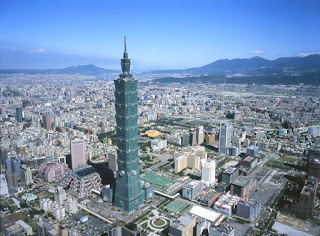Archeologia Subacquea a Taiwan

Per chi avesse la fortuna di trovarsi in Estremo Oriente, vale la pena dare un'occhiata a un'interessante mostra appena inugurata a Taiwan, e aperta fino al 13 dicembre. Per la prima volta, infatti, verranno presentati reperti di archeologia subacquea provenienti dalle aque taiwanesi, ritrovati e recuperati grazie alla fattiva collaborazione tra il governo di Taipei e il celebre centro di archeologia sottomarina francese DRASSM, uniti da un accordo quadriennale.
Il nuovo museo di Shihsahang, sede dell'esposizione, è un vero e proprio gioiello, e nei prossimi anni cercherà di diventare un efficiente polo di ricerca e di divulgazione. A tale proposito, le autorità taiwanesi hanno mostrato forte interesse per la formazione di una prima generazione di archeologi subacquei locali, che possano continuare le ricerche nei prossimi decenni.
Di seguito l'articolo comparso sulle pagine del China Post:
is being held at the Shihsanhang Museum of Archaeology in Bali, Taipei County until Dec. 13.
Under the theme Diving into History, the exhibition is composed of six divisions that feature a wide range of biological fossils from the Taiwan Strait that date back 40,000 years, an array of underwater cultural and historic assets, and a virtual underwater archaeological site, according to Lee Li-fang, a Council for Cultural Affairs (CCA) official who is one of the organizers of the exhibition.
Other highlights include 20 artifacts retrieved from a sunken Chinese Qianlong period (1736-1796) vessel that was named General No. 1 after Penghu's General Islet where it was discovered by fishermen in 1994, Lee said.
According to unofficial statistics based on sunken ship records, there are an estimated 500 sunken vessels in the Taiwan Strait, said Ho Chuan-kun, director of the Department of Anthropology at the National Museum of Natural Science in Taichung City, who is another exhibition organizer.
However, only about 10 sunken vessels have been located in a recent marine census conducted by the CCA, Ho added.
Because Taiwan lacks expertise in underwater archaeology, the CCA has sought international help in an effort to catch up with the more advanced countries in this field, according to Lee.
To this end, the CCA in 2007 signed a four-year cooperative memorandum of understanding (MOU) with France's Department of Underwater and Undersea Archaeological Research (DRASSM) for assistance in identifying and authenticating what was believed to be an ancient sunken vessel that was discovered during the dredging of Magong Harbor in Penghu, Lee said.
However, no wreckage was found during the underwater exploration of the site by local experts and seven DRASSM archaeologists, according to Lee.
Under the MOU, France will assist Taiwan with underwater archaeology projects and the two sides have jointly published two books on the topic, Lee added.
Taiwan has had marine links with China for 400 years and there are a number of sunken ships in the Taiwan Strait, said Wang Show-lai of the CCA's Headquarters Administration of Cultural Heritage.
The government should therefore seek to build underwater archaeology expertise in the country, Wang urged.
As historic heritage, artifacts and treasure recovered from sunken vessels are all considered as tourism resources, the government should set up a marine department or underwater archaeology agency to preserve these treasures, Lee suggested.
The Shihsanhang Museum of Archaeology, which was constructed at a cost of NT$380 million, is a major archaeology museum in Taiwan and an education center.
The museum was established with the aim of preserving and displaying artifacts unearthed at the Shihsanhang site.
Shihsanhang, which means "13 stores" in Chinese, was a port city that was known for extensive commerce and trade during the Qing dynasty.


Commenti
Posta un commento